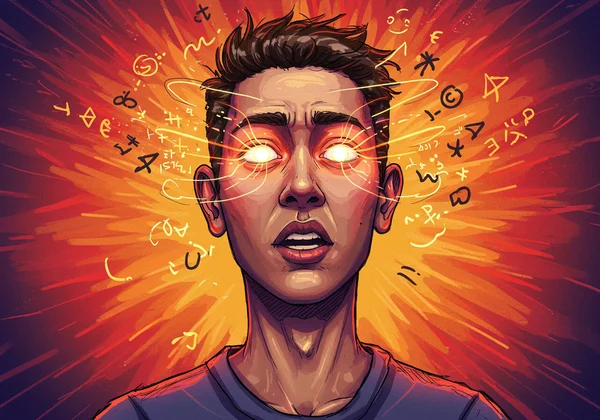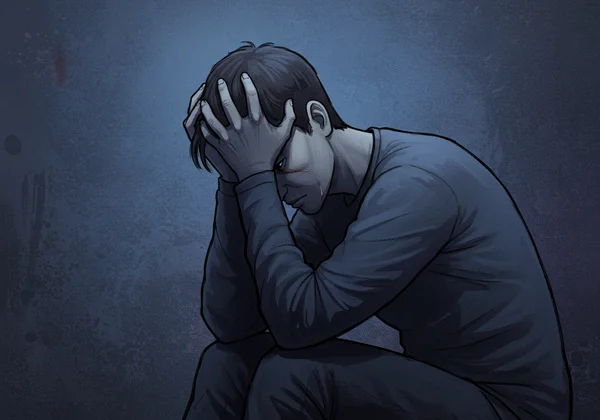Understanding Bipolar Symptoms: A BSDS Guide
Do your emotions feel like they're on a rollercoaster, from exhilarating highs to profound lows? You're not alone in seeking answers. Understanding bipolar symptoms is the crucial first step toward clarity. This guide will help you identify common signs, differentiate between various emotional states, and explain how a scientifically validated tool like the BSDS (Bipolar Spectrum Diagnostic Scale) can offer valuable initial insights into your experiences. If you're wondering, what are the signs of bipolar disorder, this article is designed to shed light on these complex patterns and guide you towards resources for a better understanding. For a free, private self-assessment, you can always start your evaluation on our website.

Recognizing Key Signs of Bipolar Disorder
Bipolar disorder is characterized by significant shifts in mood, energy, activity levels, and concentration. These episodes are distinct from everyday mood changes and can profoundly impact daily life. Recognizing these shifts is crucial for understanding the condition.
The Elevated Moods: Mania and Hypomania
The "highs" of bipolar disorder are known as manic or hypomania episodes, depending on their intensity and impact. Mania is a more severe form, often leading to significant impairment in daily functioning, potentially requiring hospitalization. During a manic episode, individuals might experience:
- Elevated Moods: Feeling unusually high, elated, or irritable.
- Increased energy or activity, sometimes feeling "wired."
- Decreased need for sleep, yet feeling rested.
- Racing thoughts and rapid speech.
- Inflated self-esteem or grandiosity.
- Engaging in risky or impulsive behaviors (e.g., excessive spending, reckless driving).
Hypomania involves similar symptoms but is less severe and typically does not cause significant impairment or require hospitalization. While it might feel productive or pleasant at first, it can still lead to poor judgment and eventually shift into a depressive episode.

The Depressive Lows of Bipolar Disorder
Conversely, the "lows" involve periods of intense sadness, hopelessness, or emptiness, often indistinguishable from unipolar depression. These depressive lows can be debilitating and include symptoms such as:
- Profound sadness, loss of pleasure, or anhedonia.
- Significant changes in appetite or sleep patterns (insomnia or hypersomnia).
- Fatigue or loss of energy.
- Feelings of worthlessness or excessive guilt.
- Difficulty concentrating, remembering, or making decisions.
- Thoughts of death or suicide.
These episodes often last for weeks or months, creating a stark contrast to the elevated states.

What Are Mixed Features in Bipolar Disorder?
Sometimes, individuals experience symptoms of both mania/hypomania and depression simultaneously. This is known as an episode with mixed features. For example, a person might feel extremely energized and restless (manic symptoms) while also experiencing profound sadness and hopelessness (depressive symptoms). This can be particularly distressing and confusing, as the conflicting emotions can intensify the internal turmoil.
Understanding Bipolar Mood Swings and Their Patterns
One of the defining characteristics of bipolar disorder is the presence of mood swings. These are not just minor shifts but significant, sustained changes in emotional state that are out of proportion to circumstances.
How Do Bipolar Mood Swings Differ from Regular Mood Changes?
Everyone experiences mood fluctuations; it's a normal part of life. However, bipolar mood swings are different in several key ways. They are:
- Intense and Extreme: Far more severe than typical ups and downs, often reaching clinical levels of mania, hypomania, or depression.
- Prolonged: Lasting for days, weeks, or even months, rather than hours.
- Disruptive: Significantly impacting daily functioning, relationships, and work or school performance.
- Unprovoked: Often occurring without a clear external trigger, or disproportionate to any trigger.
Understanding this distinction is crucial for identifying if your experiences might be more than just typical mood variations.
Exploring Rapid Cycling and Cyclothymia
Beyond the typical episodes, specific patterns of bipolar mood swings can also occur. Rapid cycling is a pattern where an individual experiences four or more episodes (manic, hypomanic, or depressive) within a 12-month period. These shifts can be very disruptive and challenging to manage.
Cyclothymia, or cyclothymic disorder, is a milder but chronic form of bipolar disorder. It involves numerous periods of hypomanic symptoms and numerous periods of depressive symptoms lasting for at least two years (one year for children and adolescents). The symptoms are less severe than full-blown manic or major depressive episodes, but they are still significant enough to cause distress or impairment. It often represents a bipolar spectrum disorder.
Why Early Recognition Matters: Taking the First Step
Spotting bipolar symptoms early is incredibly important. This proactive step can lead to timely support, potentially preventing more severe episodes and improving long-term well-being. Your journey toward understanding your mental health starts with self-awareness and decisive action.
The Role of Self-Assessment Tools Like the BSDS
Given the complexities of bipolar symptoms, self-assessment tools can be incredibly helpful for initial screening. The Bipolar Spectrum Diagnostic Scale (BSDS) is a scientifically validated and widely recognized instrument designed to help individuals quickly and privately assess whether their symptoms align with the bipolar spectrum. Using a BSDS selfassessment can provide a structured way to reflect on your experiences and offer preliminary insights.
On our platform, we offer a free, convenient, and privacy-first BSDS online test that can serve as your confidential first step. This tool is built upon an authoritative scientific foundation, ensuring reliability in its screening capabilities. While it provides a valuable bsds score and initial insights, it’s important to remember that it is a screening tool, not a diagnostic one. You can easily take our free test to explore your symptoms further.

When to Talk to a Mental Health Professional
While self-assessment tools like the BSDS can offer valuable insights and guide your understanding, they are not definitive diagnostic tools. A formal diagnosis of bipolar disorder can only be made by a qualified mental health professional, such as a psychiatrist or psychologist. If your bsds screening suggests a potential alignment with bipolar symptoms, or if you consistently experience significant mood swings that disrupt your life, it is crucial to schedule a consultation.
Be open and honest with your doctor about your symptoms, family history, and any concerns you have. The results from a bsds bipolar self-assessment can be a helpful starting point for this conversation, empowering you to discuss your experiences with more clarity. Remember, seeking professional help is a sign of strength and the most effective way to receive an accurate diagnosis and develop an appropriate treatment plan.
Your Path Forward: Taking Control and Finding Support
Understanding bipolar symptoms is a critical step towards managing your mental well-being. By recognizing the distinct patterns of mood swings, from the elevated states of mania and hypomania to the profound depressive lows, you empower yourself with knowledge. Tools like the BSDS offer a private, accessible way to gain preliminary insights into your experiences, serving as a reliable guide for self-reflection.
If you suspect you or someone you know might be experiencing signs of bipolar disorder, don't hesitate to take the next step. Our free, confidential BSDS assessment is available to help you gain initial clarity and encourage further professional consultation. Visit our site today to take your assessment and begin your path towards understanding and support.
Frequently Asked Questions About Bipolar Symptoms & BSDS
What are the signs of bipolar disorder?
The signs of bipolar disorder involve distinct episodes of elevated mood (mania or hypomania) and depressive mood, often interspersed with periods of stable mood. Elevated mood symptoms can include increased energy, decreased need for sleep, racing thoughts, and impulsive behavior. Depressive symptoms include profound sadness, fatigue, loss of interest, and feelings of worthlessness. To explore common indicators, consider taking our free screening.
What is the diagnostic scale for bipolar disorder?
One widely recognized diagnostic scale for bipolar disorder is the Bipolar Spectrum Diagnostic Scale (BSDS). The BSDS is a self-report questionnaire designed to screen for symptoms associated with bipolar spectrum disorders, helping individuals and professionals identify potential indicators. You can learn more and take the assessment by visiting our tool.
How accurate is the BSDS test?
The BSDS is a clinically validated self-assessment tool, known for its effectiveness in identifying individuals who may be on the bipolar spectrum. While it's a highly accurate screening tool, providing strong preliminary insights, it is not a substitute for a professional clinical diagnosis. Its purpose is to guide you towards further evaluation by a healthcare professional.
Is the BSDS a definitive diagnosis for bipolar disorder?
No, the BSDS is not a definitive diagnosis for bipolar disorder. It is designed as a screening tool to help individuals understand if their symptoms align with the bipolar spectrum and to encourage them to seek professional medical advice. Only a qualified mental health professional can provide a formal diagnosis after a comprehensive evaluation. If you've taken the assessment, discussing your results with a doctor is the next important step.